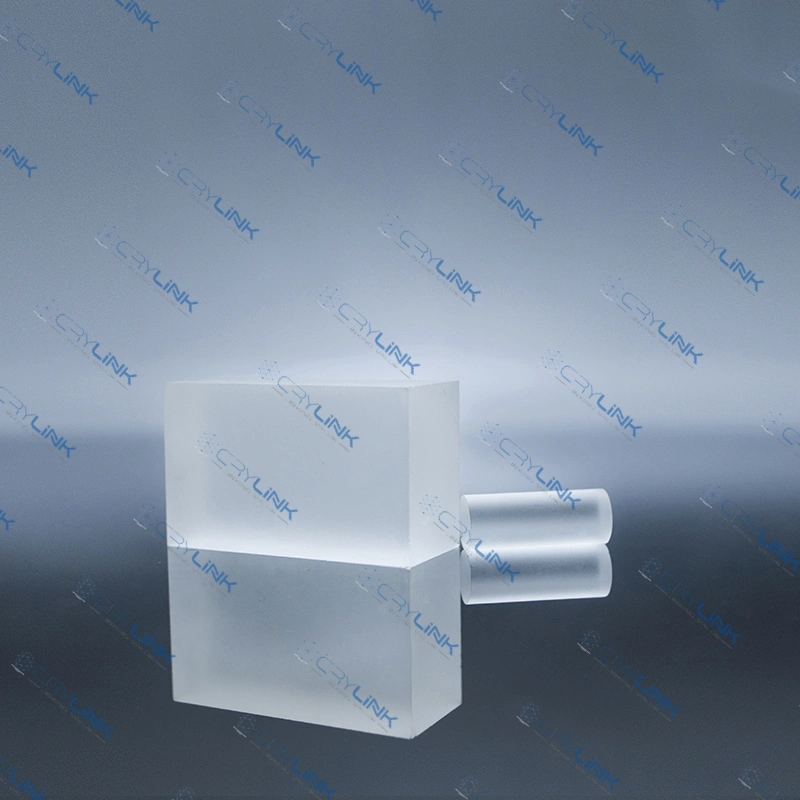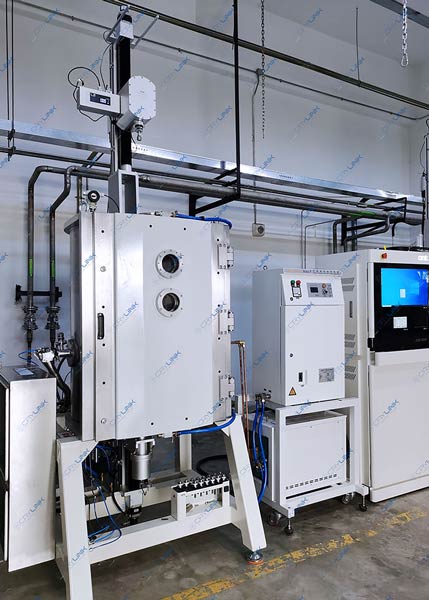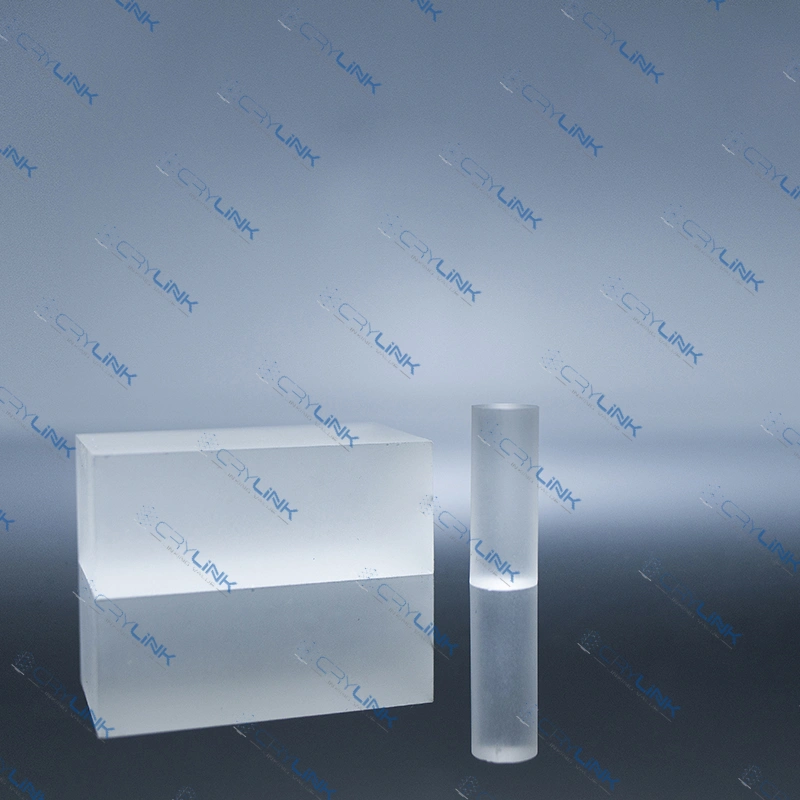Introduction
Beta Barium Borate (BBO) stands out in the realm of nonlinear optical crystals due to its exceptional attributes, such as wide transparency range, high nonlinear coefficient, and broad phase-matching bandwidth. These characteristics make BBO crystals popular for various applications, including frequency doubling (SHG), optical parametric oscillators (OPO), and electro-optical modulation. Like the different types of laser crystals we explored in our previous guide, these BBO crystals are also created through several growth methods, each with unique pros and cons. This article delves into the most common growth methods of BBO crystals, elaborating on their advantages and limitations to provide a comprehensive understanding.
Properties of BBO Crystals
BBO crystals are distinguished for their wide transparency range, high damage threshold, large nonlinear coefficients, and broad phase-matching capability. These properties vary according to the growth method employed, directly influencing the performance of the crystal in various applications.
- Transparency Range: BBO crystals exhibit a wide transparency range from 189 to 3500 nm, enabling their use across various wavelengths. The flux and hydrothermal methods, in particular, can produce crystals with excellent transparency due to their lower growth temperatures and slower cooling rates.
- Damage Threshold: BBO crystals have a high damage threshold, which is crucial for high-power applications. With their capacity to grow large, defect-free crystals, the CZ and Bridgman methods often yield BBO crystals with high damage thresholds.
- Nonlinear Coefficients: BBO crystals possess large nonlinear coefficients, enhancing their efficiency in frequency conversion applications. The precise control offered by the CZ method can optimize these coefficients by adjusting the crystal orientation during growth.
- Phase-matching Capability: BBO crystals have broad capability, making them suitable for diverse applications. The flux method’s versatility in producing various crystal shapes can maximize phase-matching efficiency for different applications.

BBO Crystal Growth Method
Czochralski Method
The Czochralski (CZ) method is a well-established technique for producing single-crystal materials, including BBO. It involves melting the raw material in a crucible, then slowly pulling a seed crystal from the melt to produce the desired crystal.

Advantages
- Quality: The CZ method can yield large, high-quality crystals with fewer defects, making it ideal for applications requiring a large aperture.
- Control: The growth rate and crystal orientation can be controlled precisely, which can significantly affect the crystal’s properties.
Disadvantages
- Energy Consumption: The CZ method is energy-intensive, requiring completely melting raw materials.
- Inclusions: Contamination from the crucible material is possible, leading to inclusions in the crystal.
Flux Method
The flux method, also known as the solution growth method, is another common technique for BBO crystal growth. It involves dissolving the raw materials in a suitable flux, followed by slow cooling to precipitate the crystal.
Advantages
- Low Temperature: The flux method operates at lower temperatures than the CZ method, reducing the crystal’s energy consumption and thermal stress.
- Versatility: It can produce a variety of crystal shapes, allowing flexibility in crystal design.
Disadvantages
- Size Limitation: The flux method typically yields smaller crystals than the CZ method. This might not be suitable for applications demanding large crystal sizes.
- Inclusions: As with the CZ method, there is also the risk of flux inclusions, which could affect the optical quality of the crystal.
Hydrothermal Method
The hydrothermal method involves dissolving raw materials in a water-based solution at high pressure and temperature, followed by slow cooling to allow the crystal to grow.
Advantages
- Low Temperature: The hydrothermal method operates at relatively low temperatures, reducing thermal stress on the crystal and energy consumption.
- Quality: It can yield high-quality crystals with fewer defects and inclusions.
Disadvantages
- Slow Growth: The hydrothermal method generally has a slower growth rate than other methods, which can disadvantage large-scale production.
- High Pressure: The high pressure required for this method necessitates special equipment and safety measures, increasing the overall complexity and cost.
Bridgman Method
Bridgman slowly cools molten material in a temperature gradient to form a single crystal. This method is especially used when the material’s melting point is too high for the CZ method.
Advantages
- Simplicity: The Bridgman method is relatively simple and doesn’t require a seed crystal, reducing the complexity of the growth process.
- Size: It can produce large crystals, beneficial for applications requiring large apertures.
Disadvantages
- Quality: The crystals grown using the Bridgman method may have more defects and lower optical quality than those grown using the CZ method.
- Efficiency: The method is less efficient in terms of yield due to the loss of material in the process.
Applications of BBO Crystals
Understanding the growth methods and properties of BBO crystals helps comprehend their wide-ranging applications. Here, we’ll explore some key areas where BBO crystals shine:
- Frequency Doubling (SHG): BBO crystals are widely used in second harmonic generation (SHG), or frequency doubling, due to their high nonlinear coefficients and broad phase-matching capabilities. This process converts a beam of photons into photons with twice the energy, effectively halving the wavelength.
- Optical Parametric Oscillators (OPO): BBO crystals’ broad phase-matching ability and high damage threshold make them ideal for optical parametric oscillators. These devices generate a pair of light waves with varying frequencies by splitting an incoming light wave, a process facilitated by the nonlinear properties of BBO crystals.
- Electro-Optical Modulation: BBO crystals are also used in electro-optical modulators due to their high electro-optic coefficients. These devices can rapidly change light intensity, phase, or polarization, a crucial function in various optical systems.
- Nonlinear Optics: Beyond the applications listed, BBO crystals are used in various nonlinear optical processes, including sum and difference frequency generation, optical parametric amplification, and terahertz wave generation.

Conclusion

In nonlinear optical crystals, the growth method plays a crucial role in determining the properties and performance of BBO crystals. Each growth method – Czochralski, Flux, Hydrothermal, or Bridgman – has unique advantages and limitations, impacting the crystal’s quality, size, and applicability. Thus, understanding these methods provides invaluable insight into the creation and use of BBO crystals in various applications. BBO crystals’ unique attributes make them integral to various technological advancements, from frequency doubling and optical parametric oscillators to electro-optical modulation.
Frequently Asked Questions
- Q1: What are the key features of BBO crystals?
BBO crystals have a wide transparency range, a high damage threshold, and a broad phase-matching range, making them invaluable in various technological applications. - Q2: Why is boric acid critical in BBO crystal growth?
Boric acid is a foundational component, facilitating the production of high-quality crystals. Its proper management is crucial to achieving the desired optical properties. - Q3: How does the stoichiometric balance influence BBO crystal quality?
The stoichiometric ratio between boric acid and barium carbonate determines the quality and optical characteristics of the resulting BBO crystals. - Q4: What is the Bridgman technique?
The Bridgman technique is a method used for single crystal growth. It involves gradually cooling a balanced mixture of barium carbonate and boric acid in a temperature gradient. - Q5: What are the applications of BBO crystals?
BBO crystals are crucial in numerous optical applications, including laser technology, photonics, and telecommunications, thanks to their unique attributes.

Frank
Frank graduated from the University of Shanghai for Science and Technology, majoring in optics. As a technical engineer at Crylink Company, he deeply understands crystal materials and laser components.
Related Video(s) with this Article
Related Product(s) with this Article
Related Application(s) with this Article

